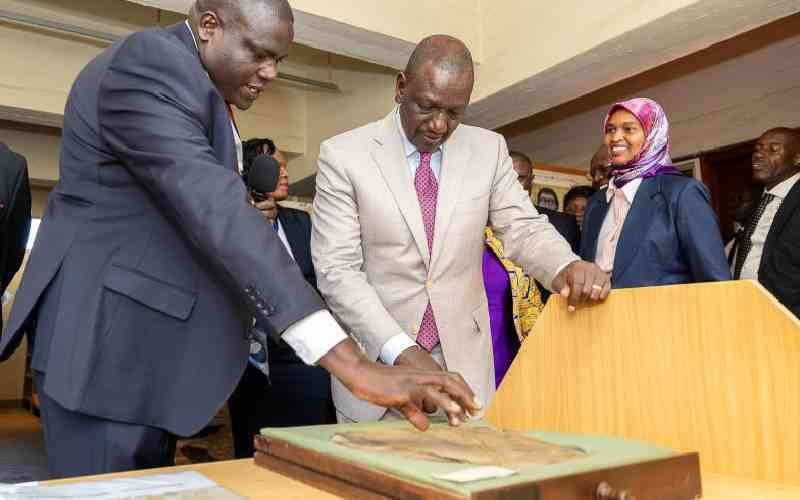UNESCO's Global Monitoring Report — Education for All 2000–2015 — which was launched last week, shows education is becoming a reality for more children, but on current trends 25 million children — 15 million girls and 10 million boys — will never attend school.
In 2013/2014, the report shows 1 million children in Kenya were not attending primary school, making it the country with the ninth highest number of primary school children out of school in the world.
"The numbers of out-of-school children worldwide have actually fallen dramatically over the last 15 years," Aaron Benavot, director of the Global Monitoring Report team, said.
"When global leaders met in Dakar 15 years ago, there were about 105 million out-of-school children. We now estimate that to be about 57 million."
While other parts of the world have made faster progress in getting children into the classroom — for instance, India sliced its out-of-school population from 16 million to 1.4 million — Kenya's progress is at snail's pace. This is despite the free primary education, the Basic Education Act enshrined in the Constitution and the huge expenditure on education.
But which of the districts in Kenya have the highest number of children out of school? The Uwezo 2012 Annual Assessment Report shows arid districts are in the lead. East Pokot District in Baringo County has 67 per cent children out of school, followed by Pokot North in West Pokot County with half of the children missing in school, then Ijara in Garissa County with 45.9 per cent and Samburu East in Samburu County with 43.2 per cent.
These findings further reveal stark regional and education inequalities. East Pokot District, for instance, not only has the highest number of children out of school, but is also ranked the worst district in Kenya and in the East Africa region in terms of learning outcomes.
In East Pokot, only 7 per cent of children aged 10 -16 years can read or do simple math.
Unesco notes that corruption, lack of investment in education and frequent conflicts are some of the factors driving children out of school.
Notably, mothers' level of education is of paramount importance. The Uwezo 2010 report showed girls aged between 6 and 14 years whose mothers had never been to school were seven times more likely to be out of school than their peers whose mothers completed the primary school cycle.
Seemingly, children's literacy and numeracy competencies increase with mothers' level of formal schooling. Kenya might never develop with such a high number of children out of school. Education must equalise the society and is the most powerful tool for reducing poverty.
Achieving security and national cohesion will remain a mirage if no concrete measures are taken to ensure that all children are schooling and indeed, learning regardless of their geographical location.
What then must we do to salvage our children in Baringo, Garissa, and Samburu and Pokot counties? For a long time, we have seen politics playing a crucial part in educational policies in the country.
With Members of Parliament, governors, county directors of education and members of the county assemblies, we surely need a multi-dimensional 'Marshall Plan' to save these children.
First, children in such counties must be helped to access the existing education institutions and to give them higher chances of staying longer in school.
Stay informed. Subscribe to our newsletter
Most importantly, citizens from the arid counties need to embrace education, especially for girls, and abandon retrogressive cultural practices and attitudes that impede progress.
 The Standard Group Plc is a
multi-media organization with investments in media platforms spanning newspaper
print operations, television, radio broadcasting, digital and online services. The
Standard Group is recognized as a leading multi-media house in Kenya with a key
influence in matters of national and international interest.
The Standard Group Plc is a
multi-media organization with investments in media platforms spanning newspaper
print operations, television, radio broadcasting, digital and online services. The
Standard Group is recognized as a leading multi-media house in Kenya with a key
influence in matters of national and international interest.
 The Standard Group Plc is a
multi-media organization with investments in media platforms spanning newspaper
print operations, television, radio broadcasting, digital and online services. The
Standard Group is recognized as a leading multi-media house in Kenya with a key
influence in matters of national and international interest.
The Standard Group Plc is a
multi-media organization with investments in media platforms spanning newspaper
print operations, television, radio broadcasting, digital and online services. The
Standard Group is recognized as a leading multi-media house in Kenya with a key
influence in matters of national and international interest.







